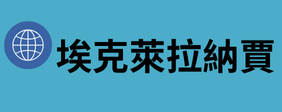Lead generation software has evolved significantly in 2025, becoming more intelligent, automated, and data-driven than ever before. To master it, the first step is understanding how the landscape has changed. Unlike earlier years where software primarily helped you capture email addresses or run basic outreach, today’s tools offer advanced features like predictive analytics, AI-powered personalization, real-time engagement tracking, and seamless CRM integration. Platforms like ZoomInfo, Leadfeeder. You must be able to distinguish between different types of lead generation tools—whether they’re focused on inbound, outbound, or hybrid methods—and select the one that best fits your industry, target audience, and conversion goals in 2025’s hyper-competitive digital space Generation Software in 2025.
Choosing the Right Leads Generation Software for Your Business
Selecting the right lead generation software in 2025 involves much more than comparing features and pricing—it requires a strategic match Generation Software in 2025 with your business goals, industry, and sales processes. With hundreds of tools on the market, phone number data from LinkedIn Sales Navigator to HubSpot and Clearbit, the best choice is the one that aligns with your audience behavior and your team’s workflow.
Start by identifying your primary lead sources: are you relying on cold outreach, website traffic, social media, or referral networks? For instance, if your leads come mostly from organic web traffic, opt for tools that excel in on-site engagement, pop-up forms, and visitor tracking like OptinMonster or Sleeknote. On the other hand, if outbound is your main channel, you’ll benefit more from tools with advanced email outreach and list-building capabilities. Additionally, make sure the software integrates with your CRM and marketing automation tools to avoid data silos. Scalability, user-friendliness, and customer support are also key criteria to evaluate when committing to a platform.
Customizing Your Workflow for Maximum Efficiency
Define lead scoring criteria based on your buyer persona and engagement metrics, the strategic advantage of partnership in lead generation and set up automatio. Rules to handle repetitive tasks like follow-ups and email sequences. For example, leads that open your email and visit your pricing page should be tagged and escalated to your sales team faster than those who just fill out a contact form. Today’s lead generation software offers powerful workflow builders and visual dashboards that help automate and monitor every touchpoint. Use these features to create a seamless, personalized experience for your prospects. The more your software reflects your real-world processes, the more efficiently it will perform.
Leveraging AI and Automation to Improve Lead Quality
Most modern tools come equipped with AI features such as predictive lead scoring, natural language processing, and behavioral tracking. These innovations help you identify the most promising prospects before your competitors do. For example, AI can telemarketing list analyze browsing behavior, company activity. And content engagement to score leads with a high likelihood of conversion. Automated workflows can then trigger budget, urgency, and buying authority. This not only reduces manual work but also ensures that your sales team spends time on leads that actually matter.
Integrating Your Software with Marketing and Sales Platforms
This enables your sales team to reach out with context-aware conversations, boosting trust and conversion rates. API integrations and no-code platforms like Zapier or Make (formerly Integromat) make this process more accessible, even for non-technical teams.
